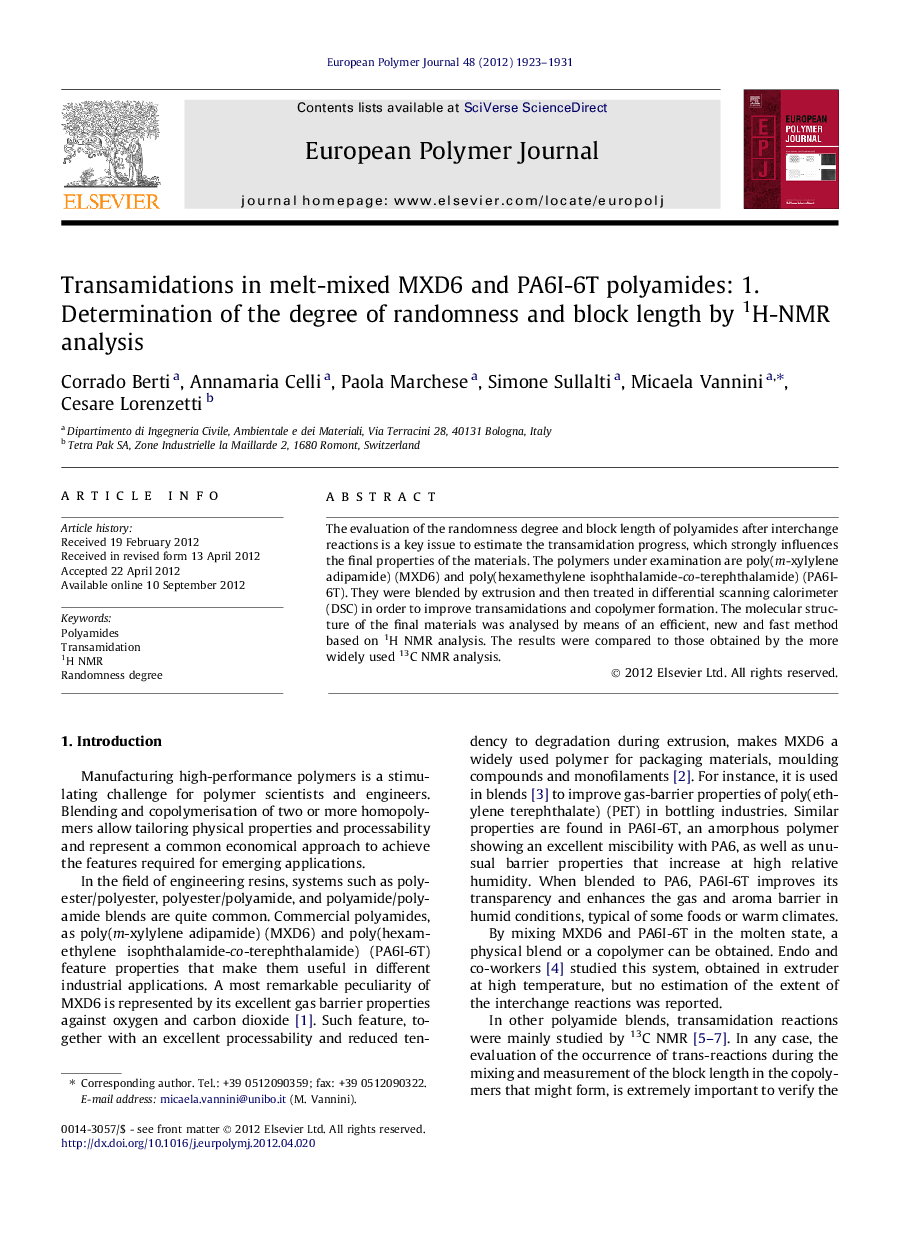| Article ID | Journal | Published Year | Pages | File Type |
|---|---|---|---|---|
| 1400470 | European Polymer Journal | 2012 | 9 Pages |
The evaluation of the randomness degree and block length of polyamides after interchange reactions is a key issue to estimate the transamidation progress, which strongly influences the final properties of the materials. The polymers under examination are poly(m-xylylene adipamide) (MXD6) and poly(hexamethylene isophthalamide-co-terephthalamide) (PA6I-6T). They were blended by extrusion and then treated in differential scanning calorimeter (DSC) in order to improve transamidations and copolymer formation. The molecular structure of the final materials was analysed by means of an efficient, new and fast method based on 1H NMR analysis. The results were compared to those obtained by the more widely used 13C NMR analysis.
Graphical abstractFigure optionsDownload full-size imageDownload as PowerPoint slideHighlights► A new method to study transamidations between polyamides by 1H NMR was reported. ► It is effective to calculate the block lengths and the degree of randomness. ► This method provides the same results obtained by the traditional 13C NMR analyses. ► Contemporaneously, it allows to significantly reduce the acquisition time. ► The HFIP dissolves the polyamides and prevents the possible interchange reactions.
